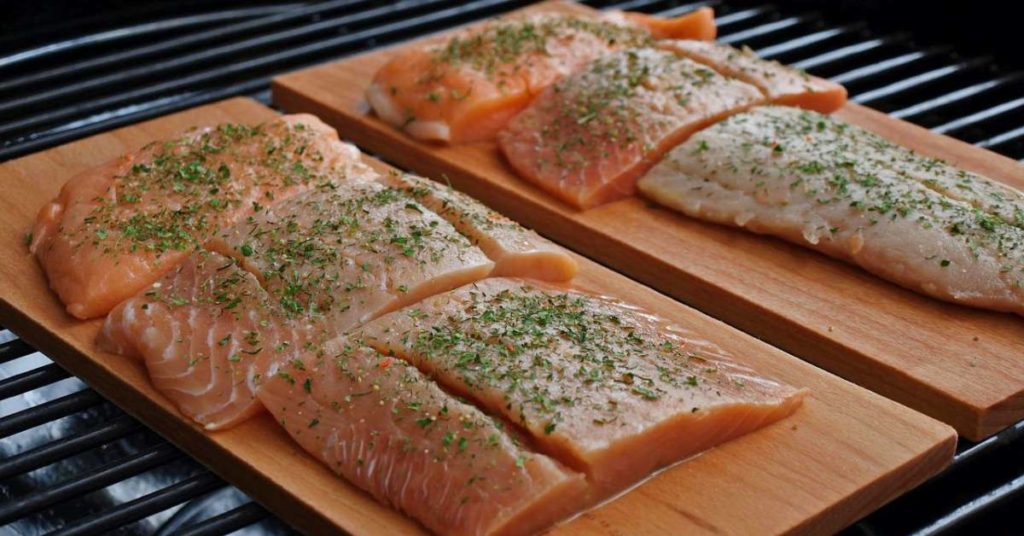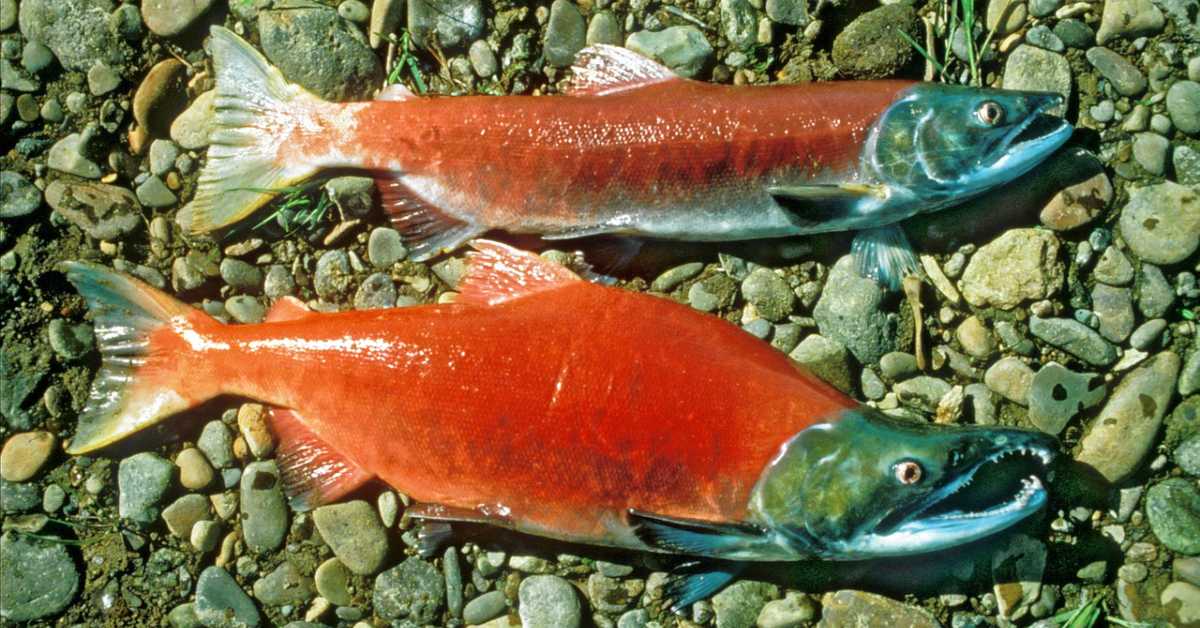Salmon is a type of fish that is prized for its pink flesh and rich flavor. There are many different types of salmon, but the two most common are Sockeye salmon and Atlantic salmon. Many people aren’t sure what the main differences are, and we’ll address that question here.
Sockeye Salmon Versus Atlantic Salmon: The Short Answers
First of all, sockeye salmon are smaller and have deeper red flesh than Atlantic salmon. They are also more abundant in the wild and are therefore more affordable. Sockeye salmon is a species that is found in the Pacific Ocean. They get their name from their bright red color.
Atlantic salmon, on the other hand, have a milder flavor and are higher in fat. As the name would imply, Atlantic salmon is a species found in the Atlantic Ocean.
One of the key differences between these two types of salmon is their external coloring. Sockeye salmon are red, while Atlantic salmon are silver. The color of a salmon is determined by the type of algae that they eat. Sockeye salmon eat red algae, while Atlantic salmon eat green algae.
Another key difference between these two types of salmon is their size. Sockeye salmon are typically small, while Atlantic salmon are large. The average size of a sockeye salmon is 12-14 inches. The average size of an Atlantic salmon is 3-4 feet.
Sockeye Salmon Versus Atlantic Salmon: Nutrition Comparison
Both sockeye salmon and Atlantic salmon are two of the most popular types of fish on the market. But what are the nutritional differences?
When it comes to calories, both sockeye salmon and Atlantic salmon are fairly similar, and some of the best types of salmon to eat. A 3-ounce serving of sockeye salmon has about 140 calories, while a 3-ounce serving of Atlantic salmon has about 150 calories. However, sockeye salmon have a higher protein content than Atlantic salmon. So if you’re looking for a leaner, higher-protein seafood option, sockeye salmon is the way to go.
When it comes to fat content, sockeye salmon is slightly lower in fat overall, but higher in healthy omega-3 fatty acids than Atlantic salmon, which are beneficial for heart health.
And finally, when it comes to vitamin and mineral content, both sockeye salmon and Atlantic salmon are good sources of vitamin B12, phosphorus, and selenium.
Sockeye Salmon Versus Atlantic Salmon: Which One Has More Mercury?
There is no clear answer when it comes to comparing the mercury levels of sockeye salmon versus Atlantic salmon. However, some studies suggest that sockeye salmon may have higher mercury levels than Atlantic salmon. This is because sockeye salmon feed on smaller fish that contain higher levels of mercury.
And when it comes to mercury levels in fish in general, it is important to remember that all fish contain some mercury. The amount of mercury in a fish depends on a variety of factors, including the size and type of fish, and their primary food source.

Sockeye Salmon Versus Atlantic Salmon Taste Comparison
Salmon is a popular seafood choice for many people, and there are two main types of salmon that you might find at the store: sockeye salmon and Atlantic salmon. So, what’s the difference between the two? And more importantly, which one tastes better?
When it comes to taste, sockeye salmon is often said to be the better choice. This type of salmon has a richer, more intense flavor that many people prefer. Atlantic salmon, on the other hand, has a milder taste that some might find to be more palatable.
So, what’s the best type of salmon to buy? As with most food choices, it depends on your personal preference. If you’re looking for a cheaper option, sockeye salmon is a good choice. If you want salmon with a richer flavor, then Atlantic salmon is a better option.
Ways to Prepare Sockeye Salmon and Atlantic Salmon in the Kitchen
There are many ways to prepare sockeye salmon and Atlantic salmon in the kitchen. The two most popular methods are grilling and baking.
When grilling sockeye salmon, it is important to use a high-quality fish-safe grill. The best way to keep the fish from sticking to the grill is to use a non-stick cooking spray or to brush the grill with oil before cooking. It is also important to preheat the grill to a moderate temperature before adding the fish.
Baking is a simple way to cook sockeye salmon and Atlantic salmon. The fish can be baked in the oven at a moderate temperature for approximately 20 minutes. It is important to baste the fish with butter or oil to keep it moist while cooking.
Both grilling and baking sockeye salmon and Atlantic salmon will result in a delicious and nutritious machine with all the amazing nutrients both of these fish contain, however the final product will differ slightly.
Baked salmon with an evenly cooked fillet keeps most of its moisture, resulting in a less intense flavor, but very moist and juicy inside. Grilled salmon brings out a deeper taste of fish due to the smoking effect grilling has and also leads to a more crisp outside texture since you are searing it on extremely high temperatures for only a few minutes, as compared to baking which is about 10-12 minutes at 375 degrees F (190 degrees C).
Sockeye Salmon versus Atlantic Salmon – FAQs
1. Pacific salmon thrive in the frigid waters of the north Pacific, while Atlantic salmon are found in the Atlantic Ocean.
2. Sockeye salmon are renowned for their bright red flesh, while Atlantic salmon are prized for their oily, fatty flesh.
3. Sockeye salmon are typically smaller than Atlantic salmon, averaging around six pounds.
4. The life cycle of a sockeye salmon is much shorter than that of an Atlantic salmon, with most fish only living for three to four years.
5. Sockeye salmon are anadromous, meaning they hatch in freshwater rivers, migrate to the ocean, and return to freshwater to spawn.

